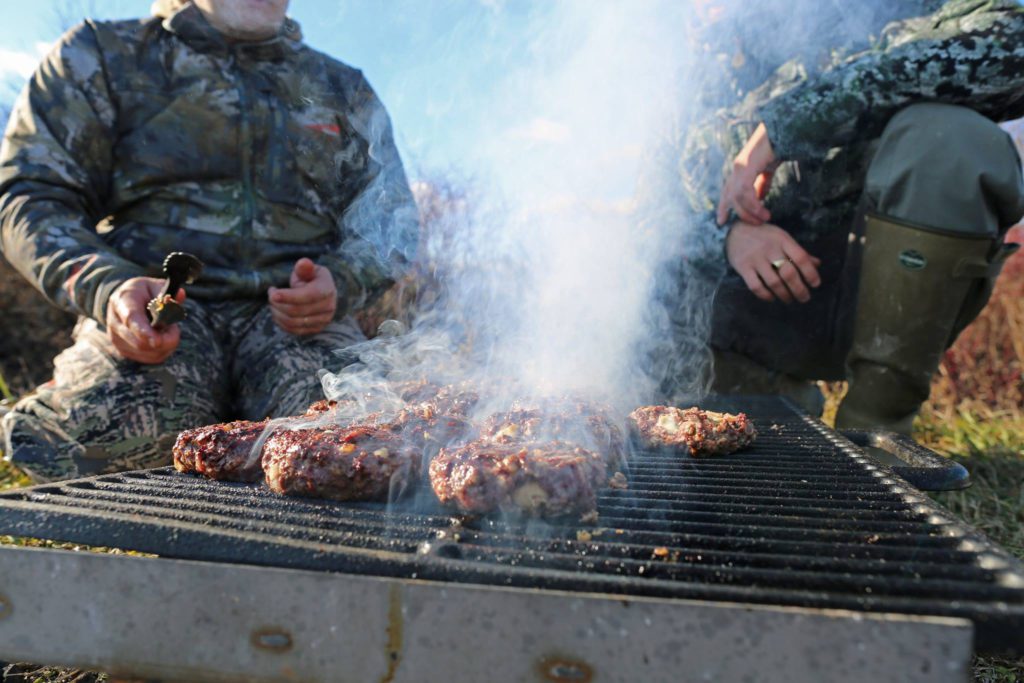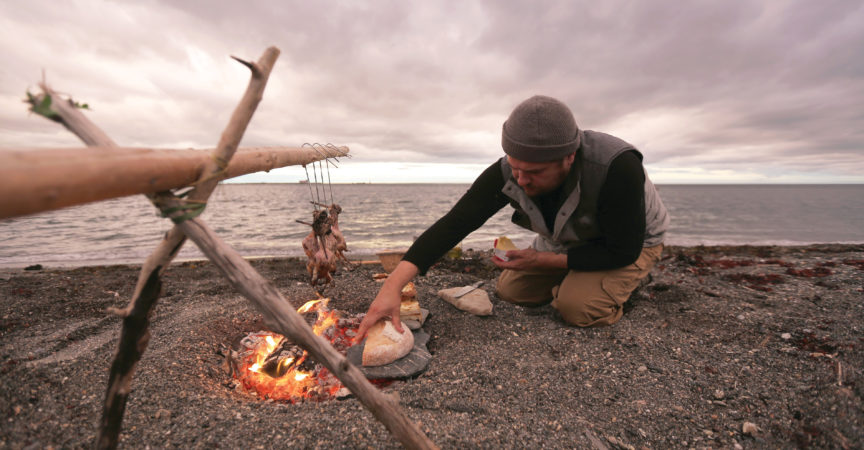On The Hunt For Some Canadian Terroir
The Oxford Dictionary defines the word “terroir” as “the complete natural environment in which a particular wine is produced, including factors such as the soil, topography and climate.”
Stéphane Modat, chef at Restaurant Chaplain at Quebec’s Fairmont Le Chateau Frontenac, is often asked to create cuisine from the Canadian terroir. Growing up in a family of hunters in southern France, his background gives him an interesting point of view on terroir. While the Oxford definition of the word refers solely to wine, the French language, and Modat, associate those characteristics not only to drinks but also to any product that comes from the land.
When it comes to culinary tourism, Modat believes that what truly matters is the terroir. He explains that when somebody comes to Canada and asks to experience the unique flavours of the country, conventional meats (meats we’re used to eating) just won’t cut it—and that’s fair. “Think about it,” he says. “When the first immigrants landed in Canada, they were not surrounded by pigs and cows, certainly not farmed ones. Instead, they ate what was available, and the odds are what was available was wild meat.”
Canada has diverse and copious wildlife—we are very different from the rest of the world. And according to Modat, this is where the richness of Canadian flavours and terroir lies. However, as long as these “forest meats,” as Modat calls them, are considered illegal, tourists and locals won’t be able to experience “the purest expression of Canadian terroir.”
And the legislation is murky at best. For example, when asked about seal meat, available for sale in Canada, the chef argues, “seal to me is a big issue. The government finally allows us to serve some real Canadian meat, but does it in a convoluted way by calling it a ‘fish!’” Laughing, he adds, “I can’t wait until moose is considered a fish too.”
This pursuit of access to authentic terroir is the reason why Modat and his colleague Frédéric Laroche started Bravejack, a documentary that follows their Canadian hunts and the ensuing meals. The pair describes Bravejack as their way of getting back the know-how and the traditions that make us Canadian while sharing this know-how with the culinary community. Together, they go across the country, hunting with local chefs and cooking what they kill on the spot, right on the forest floor under Laroche’s artistic eye who documents the encounters and the feasts.
“Canadians need to know what hunting means and which flavours are available in their home and native land,” says Modat. These two friends and colleagues are driving this conversation. “Eventually, we would love to take [Prime Minister] Trudeau and even his ministers with us on our adventures,” says Modat. “There is a lot that needs to be done when it comes to serving wild meat in restaurants, and the people in power need to come here and see to understand.”
People…need to understand where the meat comes from. How it is raised. It is not about better meat. Meat that is raised in Canada is very high-quality and well-raised…This is about the authenticity. Diversity of the country, otherwise we’ll never be different in the world food scenery. -Stéphane Modat
Modat explains that from the time when wild bison became extinct in the 1940’s, laws have been very prohibitive when it comes to hunting, and the conversation has simply stopped. What he would like is to work with the government and adjust the laws to what makes the most sense for the industry, from a sustainability standpoint and to make wild meats accessible to Canadian operators. The chef shares an anecdote of two American friends coming to Canada for three days of hunting. They can each kill up to 20 geese a day. So by the end of their trip, they could have shot a total of 120 animals!
The problem is that they can’t take the meat back home and they can only eat so much in three days. So they just leave it behind. “This waste has to stop,” declare both Modat and Laroche in unison, “and to make it stop we need the help of a government that is more flexible and willing to work with outfitters to up-cycle these abandoned carcasses.”
Restaurants are the solution to this intolerable waste. They want to use the meat and give their customers a taste of authentic Canadian terroir.
Culling is part of forest management. It needs to happen to preserve the constant renewal of the forest and to avoid some species overtaking others. Snow geese are actually overpopulating some parts of the country, and the government relies on the help of hunters to control the population. But now, hunters also need the government’s help to reduce the waste caused by foreign hunters who hunt and don’t take the meat with them when they leave. Chefs can help both the government and hunters in reducing wastage while showcasing unique Canadian gastronomy with local flavours. Herein lies a wonderful opportunity to develop culinary tourism in Canada.

When Modat and his passionate friends go hunting, they don’t go on their own. They usually get the help of locals and professionals from diverse backgrounds—from butchers to biologists. There is a lot to know regarding laws and tracking an animal, but also in understanding how taking a life will impact the environment, and the Bravejack team wants to make sure they do it right.
Whenever they are on the hunt for more exclusives meats, they travel north and ask for the help of First Nations communities. “In these regions, the ones who know the impact of our hunt are the locals.” And to make sure their relationship is not biased, money is never involved in this affair. They simply bond over a common love for the quest, the tradition and the Canadian terroir.
Regarding changing legislation around the accessibility of wild meats, Modat recommends that the Canadian government considers a new overseeing authority that will specialize in this area (something the government does not presently employ). The Canadian industry relies on the help and vision of the government. “My grandfather used to say ‘you already have the no, all that’s left to get now is the yes,’ and I am working on this.” Modat suggests that we absolutely can and should coordinate things like inspection and distribution channels for wild meats; this is totally possible and safe.
“To work with the terroir, that is what chefs should be doing,” says Modat. The people he works with need to be people interested in what they are doing, they also need to be friends. He suggests that cooking is nothing if not social.
Restaurants are the solution to this intolerable waste. They want to use the meat and give their customers a taste of authentic Canadian terroir.









